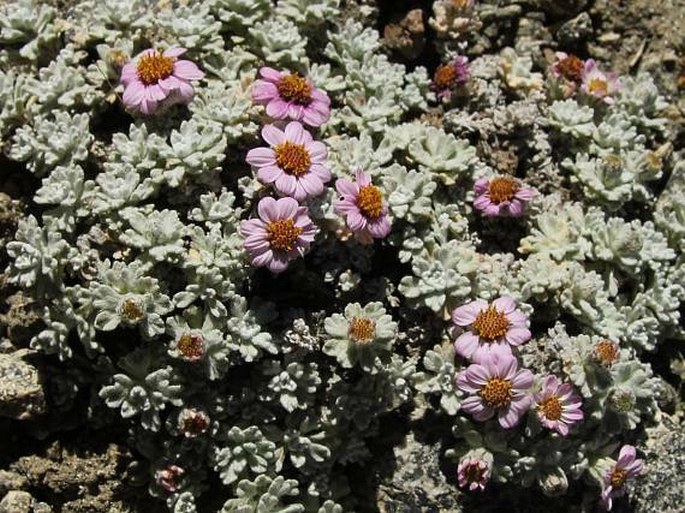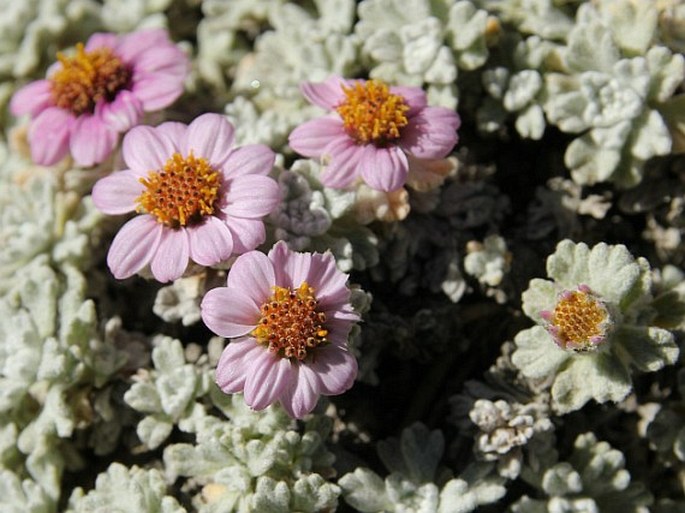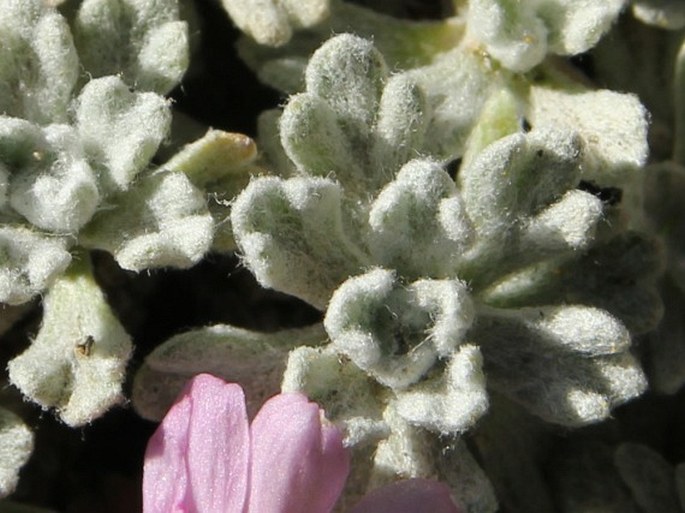Syn.: Allardia nivea Hook. f. et Thomson ex C. B. Clarke
Family: Asteraceae Bercht. et J. Presl

Distribution: From eastern Afghanistan and northern Pakistan through northwestern India to Nepal and Tibet.
Ecology: It grows on mountain slopes, in gravelly sands, at elevations from 3200 to 5400 m asl. Blooms from July to September.

Description: Perennial herb, 8–10 cm tall, densely gray-white hairy, with procumbent, woody, much branched rhizome. Leaves sessile, spathulate, (3–)5–8 mm long, 1.5–2.5 mm wide, lanate on both sides, narrowly cuneate, 3-lobed or 3-toothed at the obtuse apices. Capitula solitary, 1.5–1.8 cm across, sessile, involucre broadly napiform, 3–4-seriate, phyllaries white woolly outside, narrowly brown membranous on margins, outer oblong-ovate, 4–5 mm long, acute, inner oblong-oblanceolate, 6 mm long, obtuse. Ray florets sterile, ligules oblong, 6–8 × 2–3 mm, dark pink to reddish-pink; disc florets yellow, 4–5 mm long, glandulose. The fruit is an achene, 1.5 mm long, pappus yellowish-brown, 2.5–3 mm long.



These images were taken in India, Ladakh, from Murabak to Lasermo La (by Jindřich Houska, July 27, 2013).


